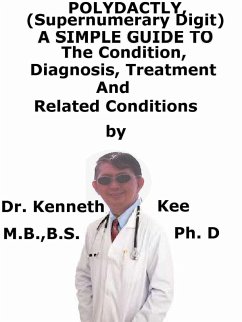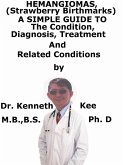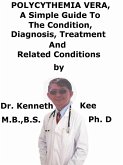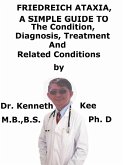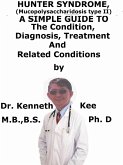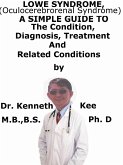This book describes Polydactyly, Diagnosis and Treatment and Related Diseases Recently I had a female patient whom I observed had 6 fingers on her both hands with an extra small finger. Astrologers believed that having a sixth finger brings enormous luck. Six fingers in both hands meant that the person will be famous. It was one reason why her parents did not remove the extra fingers even though she was teased in school. Polydactyly is a disorder in which a person has more than 5 fingers per hand or 5 toes per foot. The presence of extra fingers or toes (6 or more) can occur on its own. There may not be any other symptoms or disease present. Polydactyly is a congenital malformation of the fingers and toes. Polydactyly can differ in the degree of severity. Polydactyly may range from small skin tissues on the side of the hands to fully developed extra fingers with bone, blood vessels, and muscle tissue. Postaxial Polydactyly happens when the extra digit is sited beside the little finger or toe. Pre-axial Polydactyly happens when the extra digit is sited near the thumb or big toe. Central polydactyly happens when the extra digit is between other fingers or toes. Syndactyly is either a complete fusion of fingers or toes or a looser webbing of skin between them. Polydactyly and syndactyly are normally isolated disorders, meaning the child will have no other birth defects. Both are also found in many complex and sometimes lethal groups of anomalies or syndromes. Polydactyly may be passed down in families. This trait affects only one gene that can cause several differences. Extra digits may be poorly formed and joined by a small stalk. This most often happens on the little finger side of the hand. Poorly formed digits are normally removed. Just tying a tight string around the stalk can cause it to fall off in time if the digit has no bones. In some cases, the extra digits may be well-developed and can even function as a normal finger. Larger digits may require surgery to be removed. Causes 1. Asphyxiating thoracic dystrophy 2. Carpenter syndrome 3. Ellis-van Creveld syndrome (chondroectodermal dysplasia) 4. Familial polydactyly 5. Laurence-Moon-Biedl syndrome 6. Rubinstein-Taybi syndrome 7. Smith-Lemli-Opitz syndrome 8. Trisomy 13 Polydactyly can be produced by the presence of an autosomal dominant trait. Because the gene is dominant, when one parent has the gene, each of his or her children has a 50 % possibility of having polydactyly Symptoms: Children with polydactyly are born with 1 or more extra fingers or toes. The extra digit may be: 1. A small, raised bump or a piece of skin that looks like a small finger or toe that is not fully formed (nubbin) 2. A complete, working finger or toe Diagnosis Diagnosis is made during the early physical examination at birth. Some children with polydactyly will require radiographs or x rays to find out if there is bone present in the extra digit. Treatment: In most cases, doctors do away with an extra finger or toe in early childhood. The purpose of treatment is to give the child a hand or foot that functions well and looks typical There are also practical problems such as excising an extra toe so the child's foot can fit well into shoes Vascular clip If the digit is poorly developed and has no bone, occasionally the treatment is as simple as attaching a vascular clip at the base during a clinic visit. The clip blocks blood flow to the digit so it will fall off Surgery If the digit is more fully developed with bones, tendons, nerves and blood vessels, a surgeon surgically excises it in the operating room when the child is about 1 year old. This is performed as a day surgery. TABLE OF CONTENT Introduction Chapter 1 Polydactyly Chapter 2 Causes...
Dieser Download kann aus rechtlichen Gründen nur mit Rechnungsadresse in A, B, CY, CZ, D, DK, EW, E, FIN, F, GR, H, IRL, I, LT, L, LR, M, NL, PL, P, R, S, SLO, SK ausgeliefert werden.

